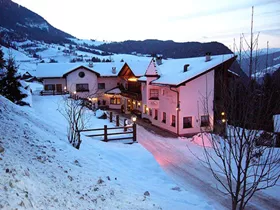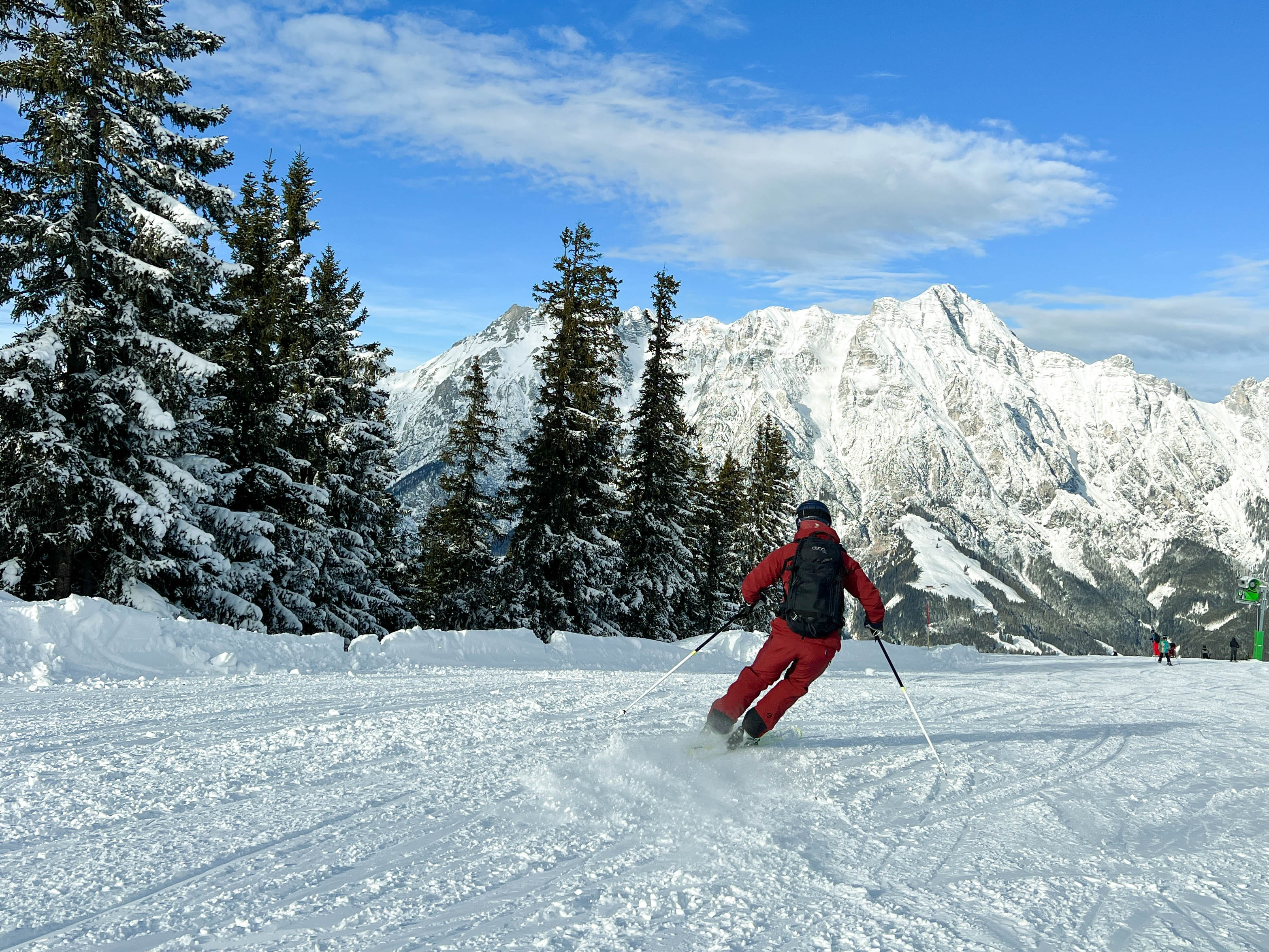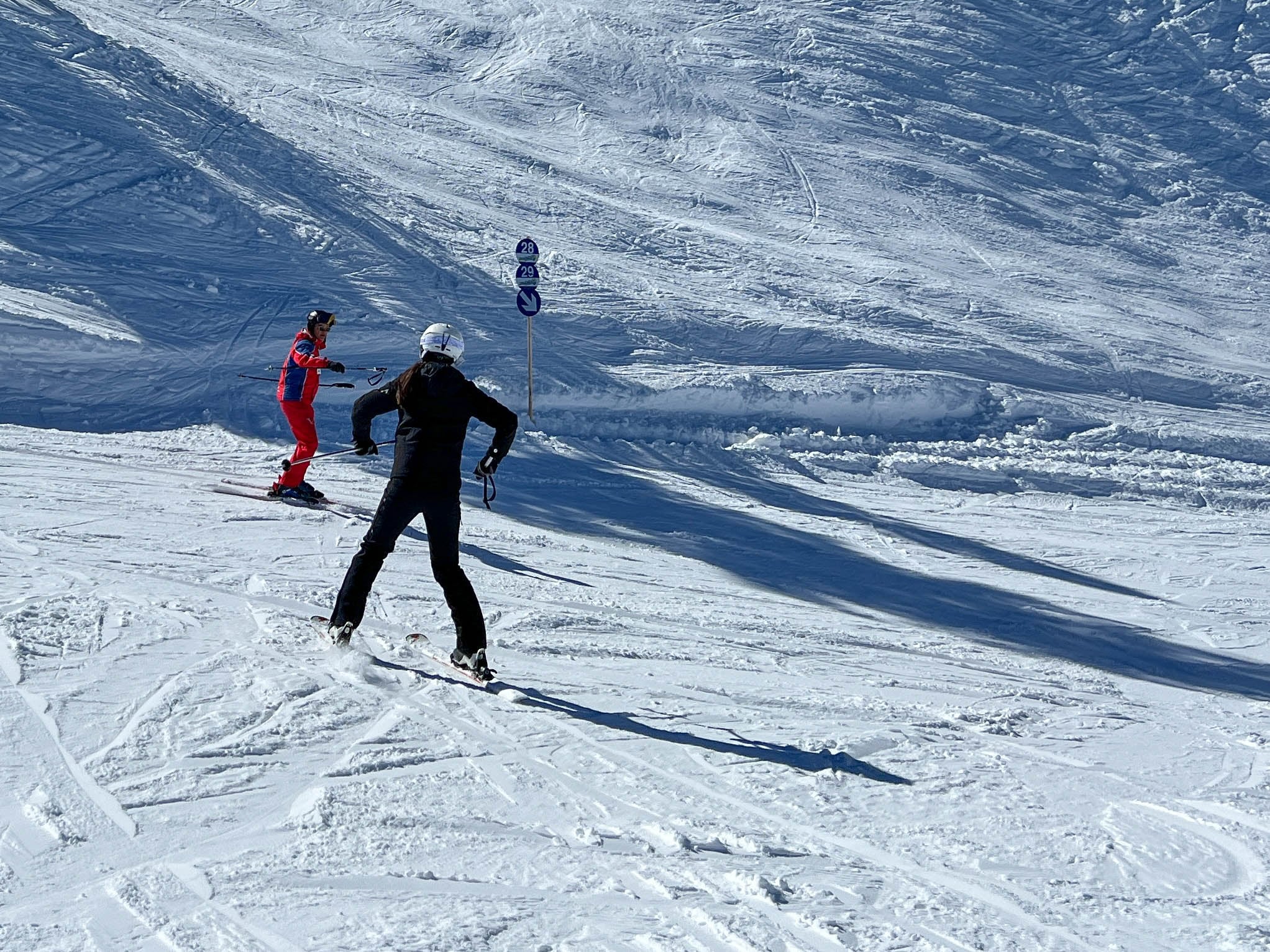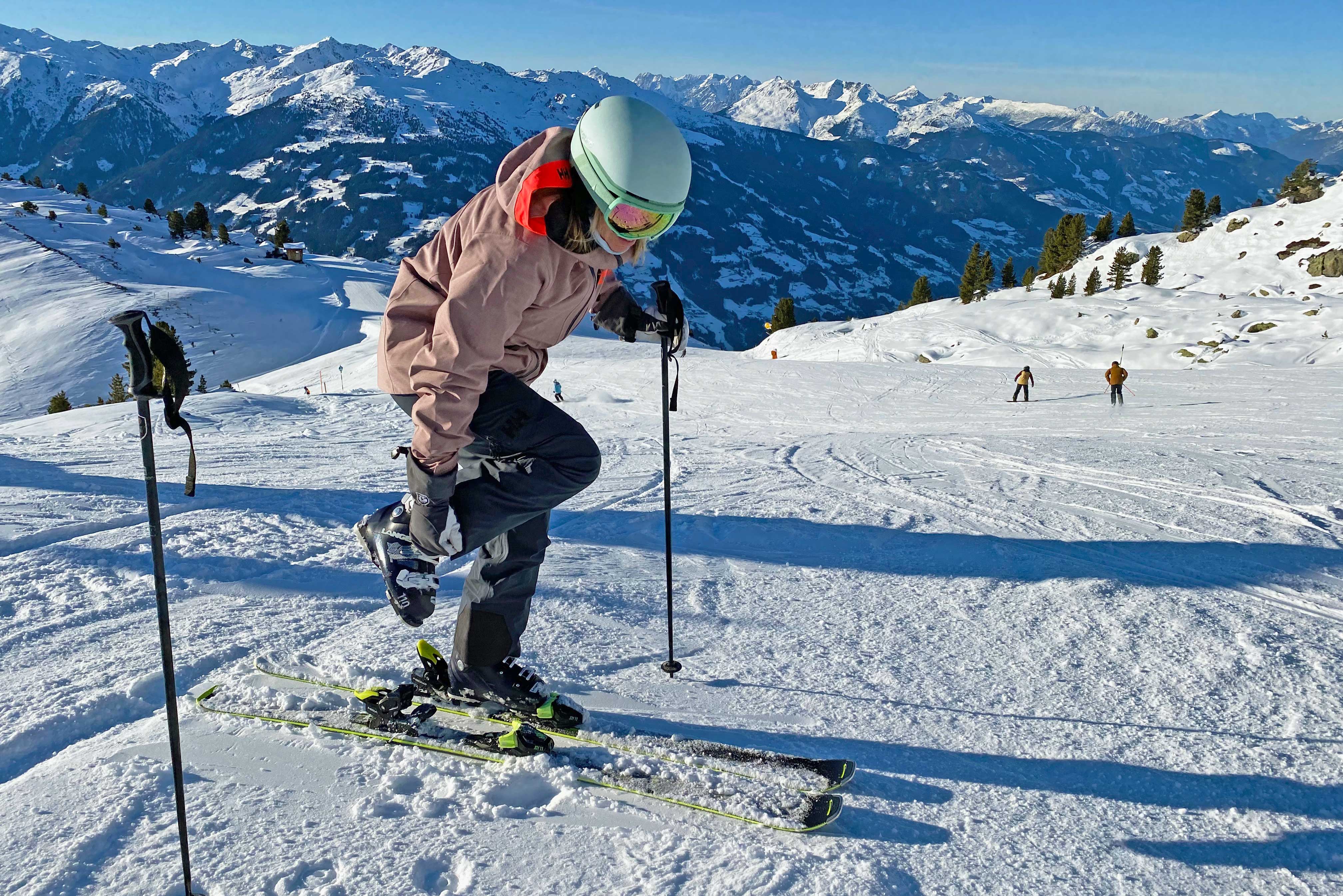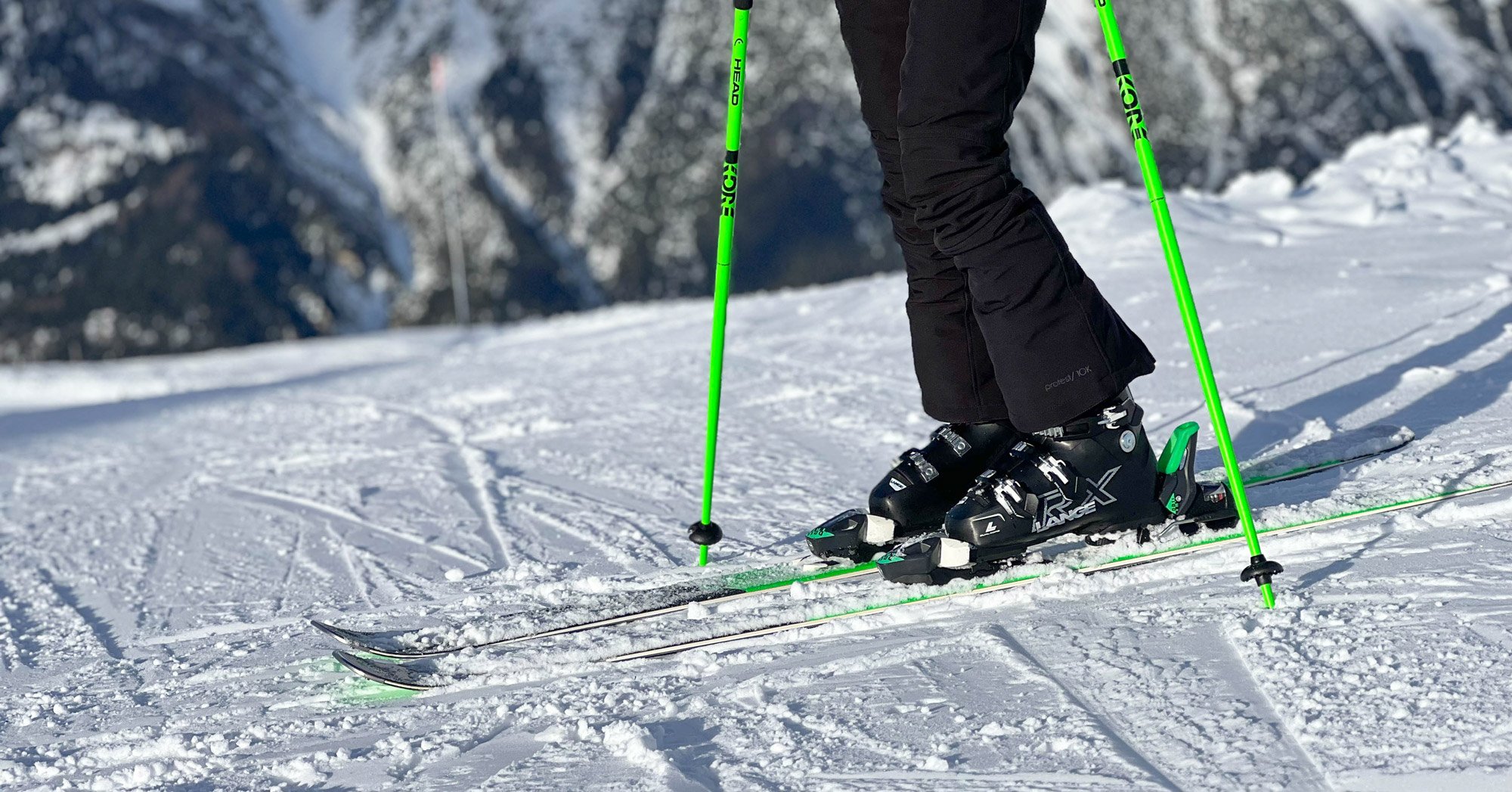

Unfortunately, the sun doesn't always shine on skiing days. Especially on these days, it is important to be well-prepared, because before you know it, your body cools down, and unfortunately...warming up again is no easy feat!
The cause of hands and feet as cold as ice cubes
As soon as the temperature drops, your hands and feet are the first to cool down. Why is this? The main task of your body is survival; when temperatures drop, your body prioritizes keeping the most important organs warm. To do this as efficiently as possible, the blood vessels in your hands and feet constrict, so the warm blood stays mainly in your torso and head. This survival mechanism is, of course, fantastic, but in some people, the brain registers extreme cold at temperatures as high as 15°C, triggering this physiological phenomenon. This occurs in about 15% of women and 10% of men. On cold winter days, however, the risk of cold hands and feet affects everyone. With these 5 warming tips, you can conquer the slopes comfortably warm.
Tip 1. How to maximize hand warmth with gloves
Of course, keeping your hands warm starts with wearing a pair of warm gloves. Here are the best tips:
- Inner gloves: Also called undergloves. Wearing an inner glove makes a world of difference. This is not only because of the extra layer of insulation you create, but also because your inner gloves catch the sweat, preventing your entire glove from getting soaking wet inside.
- Do you suffer from sweaty hands easily? Then take an extra pair of inner gloves with you and change them occasionally. When you get home, wash them in soapy water so that the next day they are able to absorb the maximum amount of moisture. Inner gloves don't have to be expensive; you can find a polyester one around £15.
- Mittens versus gloves with fingers: Mittens keep your hands a lot better warm. Because your fingers are cozy together, they transmit warmth to each other. You're just a lot less flexible with your hands. When fastening the clips of your boots for example, you have to take off your mittens before you can do this job.
- Tip: Wear a pair of inner gloves under your mittens. If you want to grab something from your backpack or fasten your ski boots, you only have to take off your mittens and your hands won't cool off right away.
- Heated gloves: If you want to make yourself completely comfortable, opt for rechargeable heated gloves. Most come equipped in different heat settings. Choose the highest setting when you want to warm up your hands and then switch to a lower setting. This will prevent your hands from sweating (and thus cooling down quickly).
- Count on an average heat duration of about 8 hours, depending on the ambient temperature and which heat setting you use. Of course, it is always possible to purchase an extra set of batteries so that you are assured of warm hands throughout the day. For a good pair of heated ski gloves you will spend between £150 and £200. It is a bit of an investment, but then you have something!
- Regular ski gloves: Depending on your budget, you can go crazy with ski gloves. Make sure they are breathable and wind and water resistant. Leather gloves, while more expensive to buy, will last longer. Make sure the gloves fit snugly at the cuffs so that cold and moisture have no chance to buy in.
- Do you want your glove to be able to turn your phone on and off? These days, many ski gloves feature touchscreen guidance on the thumb and index finger.
Tip 2. Lite on this when choosing your ski socks
- The thickness of the sock: You would say that thicker socks keep your feet warmer. This is true to a certain extent. Except if this thicker sock causes you to have little room left in your ski boot, making your ski boot too tight. A ski boot that is too tight pinches off your blood vessels and inhibits your blood circulation. The result is cold feet.
- Material of the sock: Many people swear by (merino) wool socks. For those blessed with feet that do not sweat easily, ski socks made of wool are a good choice. Wool has the ability to retain heat extremely well.
- Do your feet perspire easily? Then choose socks made of a synthetic material such as (a mix of) polyester, bamboo and coolmax. These materials are good at transporting moisture, after which it has the opportunity to evaporate. Wool, on the other hand, has the property of retaining moisture, making your feet feel clammy faster. It is also a good idea to choose socks that have some elastane (also known as spandex) in them. This elastic material improves the fit of the sock, providing optimal support for blood circulation.
- Heated socks: For the purebred chillers among us, electric heated socks are a great invention. The heat conductors run mainly around the toes, from where the rest of your feet become pleasantly warm. These heat conductors are so thin that you do not feel them while wearing them. The operation is very simple; at the top of the sock (just above your ski boot) there is a button with which you can control everything. It allows you to turn the sock on or off and change the heat setting. Do you find it annoying to roll up the legs of your ski pants? Then choose heated ski socks with a remote control.
- You can expect that heated socks will keep your feet warm for about 8 hours.
- Heated insoles: Would you rather use your own ski socks? Instead of heated socks, you can also choose heated insoles. They can be operated with a remote controle very easily.
Avoid sweaty feet
Because you move around a lot, the risk of sweaty feet is high. Unfortunately, sweaty feet have the property of cooling down quickly, because moisture is harder to heat up than dry air. Perspiration ointment for sweaty feet is highly recommended. You will notice the effect of this ointment after a few days, so start applying it a few days before you go on winter vacation. Foot spray and foot powder work from the very first use, but their action is slightly different. The magnesium carbonate in these agents absorbs moisture, making your feet feel dry longer. However, this moisture absorption is of course limited. In addition, these products contain an agent with antibacterial action, so the risk of a fungal or bacterial infection is kept out.


Tip 3. Warm hands and feet starts with keeping the rest of your body warm
When your brain registers that your torso is cooling down, the first thing it will do is signal the blood vessels in your hands and feet. These will constrict so that circulation is concentrated primarily around the major organs in your torso (and head). For many people, the arms and legs will also feel cold very quickly. So keeping your hands and feet warm starts with keeping your torso and head warm.
- Dress in layers. You've heard this tip many times, of course. But what you may not know is that this is not just about insulation layers, at least as important are the extra layers of air you create. It is precisely the layers of air that are needed for moisture to evaporate.
- So as your first layer, wear a long-sleeved thermal shirt and thermal pants. Choose a set made of polyester. Never of wool. Wool has the property of retaining moisture well. If you wear wool on your body, your body quickly feels clammy and actually cools down faster. Polyester has the property of transporting moisture from your body to the next layer of air.
- So it is also better to choose 2 thinner sweaters instead of 1 thick sweater so that you create an extra layer of air. The first sweater could be a ski pully made of fleece or polyester. The second sweater could then be a (thin) wool sweater that serves perfectly as a warm insulation layer.
- The thermal layer may fit nicely close to your body, but the following layers should fall a little wider. So that the layer of air is actually present.
- Finally, of course, you wear a breathable and waterproof ski jacket and pants over it. This can also be a heated jacket that incorporates down.
- Hat, helmet hat and buffer. Much of your body heat is lost unnoticed through your head. So during a break, immediately swap your helmet for a warmth hat.
- On days when the cold hits you in the face as you whiz down the slopes, wearing a helmet cap is a good idea.
- If you wear a ski pully, your neck is already kept somewhat warm, but a ski buffer (neck warmer) works even more effectively.

Tip 4. Tips for the slopes
The first 3 tips are about your clothes. But what is the best thing to do once you are actually on the slopes?
- Spread your energy throughout the day. If you use up all your energy right away, chances are you will slow down afterwards. The less you move, the less body heat is generated.
- It is tempting to take long breaks, but especially if you have a snow day to catch, it is important to keep moving evenly throughout the day.
- Regularly remove the snow from your ski or snowboard boots. Do we need to say more?
- Choose the right slopes. Is the sun shining somewhere? A sunny slope feels a lot warmer than a shaded one.
- Find out where the wind is coming from. Avoid slopes that catch a lot of wind. Also, prefer to stay a little lower in the ski area. The higher up the mountain, the colder it gets. With dry air, every 100 meters the temperature drops by 1 °C. With moist air, it is 0.6 °C.
- And finally, before you start your descent, don't stay up there too long enjoying the view. Tempting as it may be, you've just spent some time sitting still in the gondola, and high on the mountain you'll also cool off quickly.
- Eat and drink yourself warm. A bowl of soup warms you up better than a salad. Choose hot tea instead of cold drinks. In any case, hydration is incredibly important. Even though it is cold outside, during skiing or snowboarding you lose a lot of fluids unnoticed due to your efforts. To keep all body processes going well, drinking enough water (tea) is essential.
- And alcohol? A glass of mulled wine will warm you up, right? That's absolutely right. Alcohol causes the blood vessels to dilate, allowing the blood to flow better, so the heat can be better distributed in your body. But there's a catch here.
- The dilation of your blood vessels causes you to lose a lot of heat. Your body may temporarily feel less cold, but your internal temperature drops. After half an hour, your blood vessels will constrict again and you will actually feel extra cold. So limit your alcohol intake. What can you do to stay warm? Jumping along during après-ski might not even be such a crazy idea!

Tip 5. Leave home warm and dry.
Did you sit still for a long time over breakfast? The really coldhearted among us may already be suffering from cold hands and feet. Warming up in the cold is a lot harder than indoors. So make sure you get some exercise after breakfast. If necessary, clean up a bit, if you are in a hotel, take the stairs instead of the elevator, at least try to keep moving.
- Keep your shoes dry. Wet ski boots guarantee cold feet. So it is essential that you make every effort to dry your boots as much as possible after a day of skiing.
- Doesn't the accommodation have ski boot dryers? Then put your ski or snowboard boots by the stove at the end of the day. Be sure to close the cleats and Velcro, that way your shoe will maintain the proper fit.
- By the way, you can find affordable shoe dryers in all specialized winter sports stores.
- Wear clean socks every day. If you wear socks that have not been washed, they are less able to absorb moisture.
- Keep your gloves dry. What goes for your shoes also goes for your gloves. You can also use a shoe dryer for your gloves. No shoe dryer available? Then put them to dry by (not on) a stove.
This year, you will master both the slopes and the cold, have fun!





